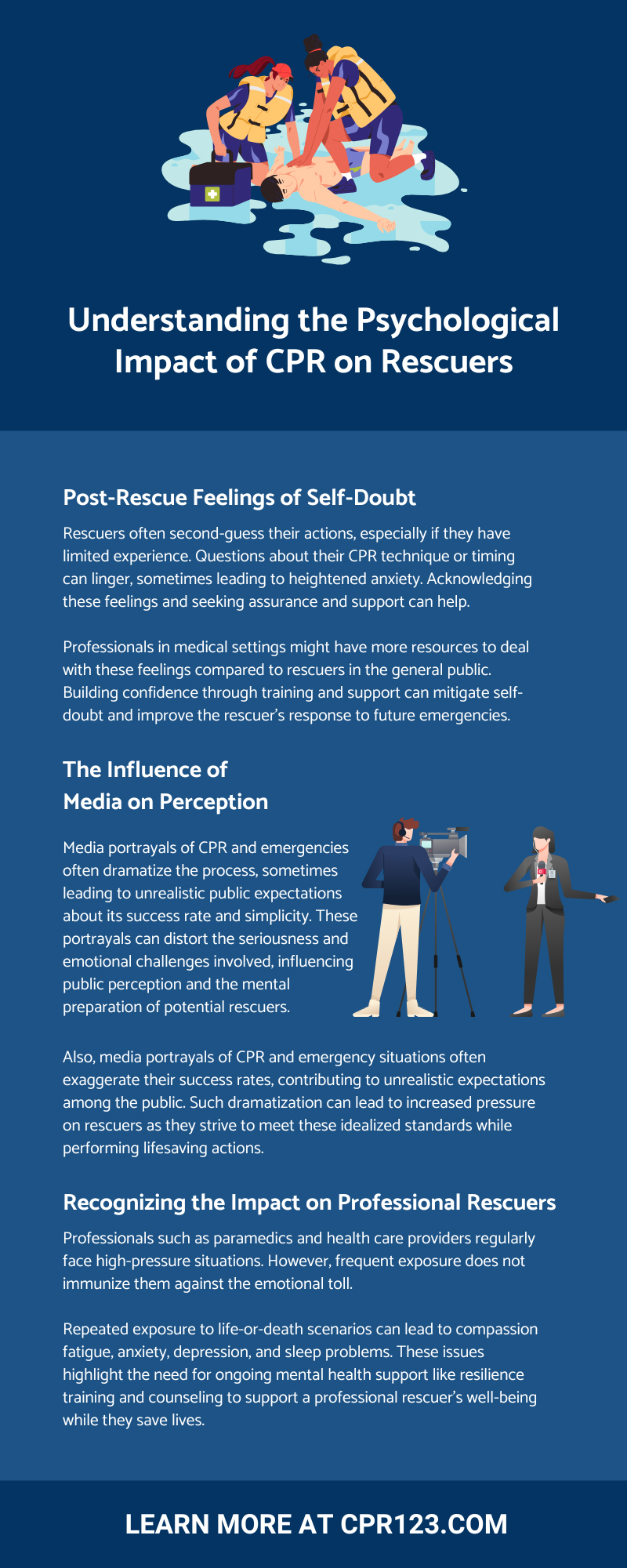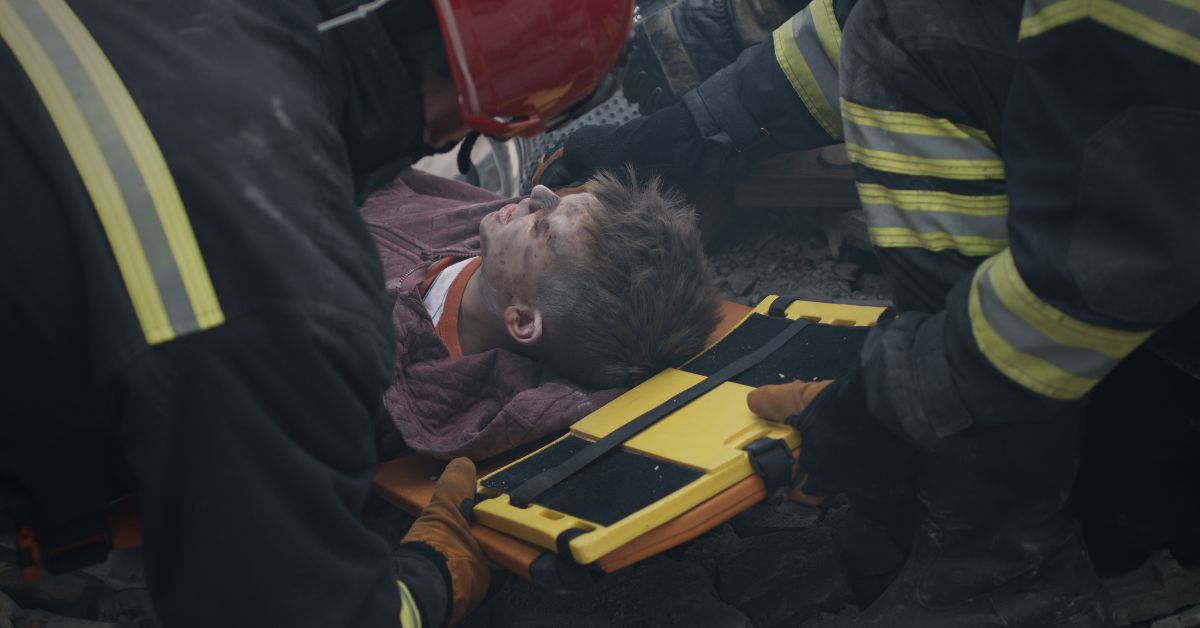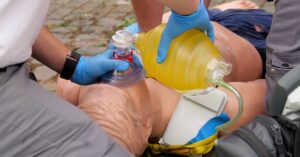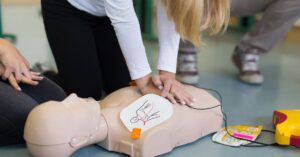CPR, or cardiopulmonary resuscitation, is a lifesaving skill used in real-life emergencies. While the focus often lies on its lifesaving potential, understanding the psychological impact of CPR on rescuers is equally important. From knowing the basics and implications of CPR to recognizing the emotional aftermath, this post will provide comprehensive insights into the psychological landscape of lifesaving treatment on rescuers.
What Is CPR and Why Does It Matter?
CPR is a critical emergency procedure that maintains the flow of oxygenated blood to the brain and vital organs when someone’s heart has stopped. Administering CPR increases the chances of survival after cardiac arrest, so speed and proper technique matter.
Performing CPR is an experience often infused with intense emotions that can leave deep imprints on the rescuer. Being responsible for saving a life or witnessing the possibility of losing one can weigh heavily on individuals.
Even trained professionals can experience intense emotions. The pressure of performing CPR correctly and dealing with the immediate aftermath contributes to emotional fatigue, sometimes manifesting as anxiety or self-doubt.
For many, the experience is nerve-racking but rewarding. Nevertheless, you might grapple with questions about your performance or the outcome, which can lead to post-event stress that may impact health and wellness.
[Image A]
Understanding Stress Responses in Emergency Situations
During emergencies, the body naturally responds by releasing stress hormones like adrenaline and cortisol. These chemicals prepare the body for “fight or flight,” enhancing physical capabilities and focus during a crisis.
However, this heightened state can also lead to increased heart rate, shallow breathing, and tension, which may affect one’s ability to perform CPR effectively. Prolonged exposure to such stress responses—especially if CPR is performed multiple times or in conjunction with critical outcomes—can contribute to psychological issues, including post-traumatic stress disorder (PTSD) or burnout.
Recognizing these physiological and psychological responses helps provide support to rescuers, guaranteeing they’re equipped to handle present and future emergencies without negatively impacting their physical or mental health.
Post-Rescue Feelings of Self-Doubt
Rescuers often second-guess their actions, especially if they have limited experience. Questions about their CPR technique or timing can linger, sometimes leading to heightened anxiety. Acknowledging these feelings and seeking assurance and support can help.
Professionals in medical settings might have more resources to deal with these feelings compared to rescuers in the general public. Building confidence through training and support can mitigate self-doubt and improve the rescuer’s response to future emergencies.
The Influence of Media on Perception
Media portrayals of CPR and emergencies often dramatize the process, sometimes leading to unrealistic public expectations about its success rate and simplicity. These portrayals can distort the seriousness and emotional challenges involved, influencing public perception and the mental preparation of potential rescuers.
Also, media portrayals of CPR and emergency situations often exaggerate their success rates, contributing to unrealistic expectations among the public. Such dramatization can lead to increased pressure on rescuers as they strive to meet these idealized standards while performing lifesaving actions.
Recognizing the Impact on Professional Rescuers
Professionals such as paramedics and healthcare providers regularly face high-pressure situations. However, frequent exposure does not immunize them against the emotional toll.
Repeated exposure to life-or-death scenarios can lead to compassion fatigue, anxiety, depression, and sleep problems. These issues highlight the need for ongoing mental health support like resilience training and counseling to support a professional rescuer’s well-being while they save lives.
The Power of Debriefing and Peer Support
Debriefing sessions provide an essential platform for rescuers to process their experiences and emotions following a high-intensity event. These structured conversations allow individuals to express their feelings, share their experiences, and gain insights from colleagues, which can alleviate the emotional burden of lifesaving efforts.
Additionally, peer support programs foster a sense of community and solidarity, offering rescuers continuous emotional and psychological reinforcement. This supportive environment promotes resilience, reduces the risk of long-term psychological issues, and prepares individuals to tackle future challenges with renewed vigor and confidence.
[Image B]
The Role of Training in Building Confidence
Taking a certification course will teach you the ins and outs of proper CPR. CPR123 provides a variety of certification courses, including the American Heart Association’s Basic Life Support (AHA BLS) courses that offer the framework needed to perform CPR effectively.
These courses teach essential skills, boosting confidence through practice and instilling resilience to respond effectively. The more prepared individuals feel, the less impact their emotional responses have during emergencies.
Experiencing the Positive Side of CPR
Successfully saving a life reinforces the significance of the rescuers’ actions and underscores the value of their training. This success can enhance self-efficacy, boosting confidence and motivation for future emergencies.
Moreover, positive outcomes provide an emotional uplift, contributing to a sense of accomplishment and fulfillment. These favorable experiences can help balance the emotional toll, fostering resilience and promoting a more stabilized perspective in managing the psychological impact of their lifesaving role.
The Importance of Ongoing Support for Rescuers
Continuous access to mental health resources, such as counseling and stress management programs, mitigates the lasting psychological effects of their work. Institutions should prioritize creating a supportive culture that acknowledges the emotional labor involved in emergency responses and actively promotes well-being.
Regular workshops focused on resilience and coping strategies can bolster rescuers’ ability to handle emotional stressors effectively. Remember, fostering open communication and empathy within teams encourages a supportive network where individuals feel valued and understood, contributing to a sustainable, emotionally healthy workforce.
Encouraging Community Engagement Through CPR Training
Community engagement in CPR training promotes widespread lifesaving preparedness. Encouraging individuals from diverse backgrounds to participate in training sessions can increase the number of potential lifesavers in the community. By promoting awareness through community events, workplaces, schools, and other organizations, the public can develop a broader understanding of the importance of CPR.
Engaged communities, empowered with the skills and confidence to perform CPR, create a safety net that benefits everyone. You can improve the overall resilience of your community and its capability to respond during emergencies.
Administering CPR may lead to profound emotional and mental effects, but understanding the psychological impact of CPR on rescuers helps create a supportive environment. To begin your lifesaving journey, take one of CPR123’s courses, and discover how you can contribute to your community by valuing life and mental well-being.








